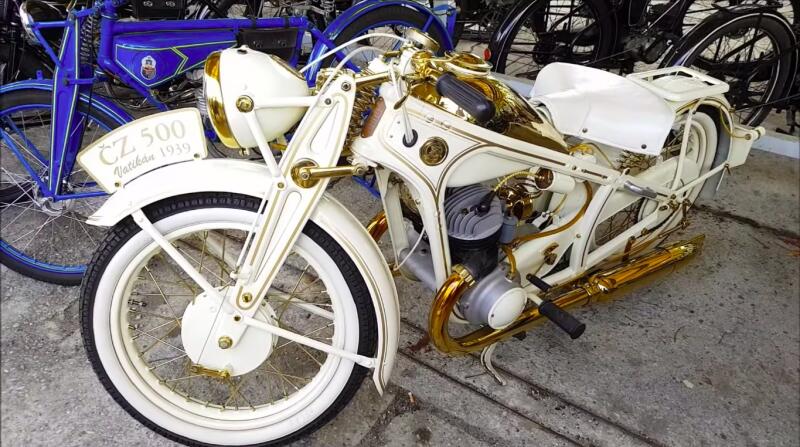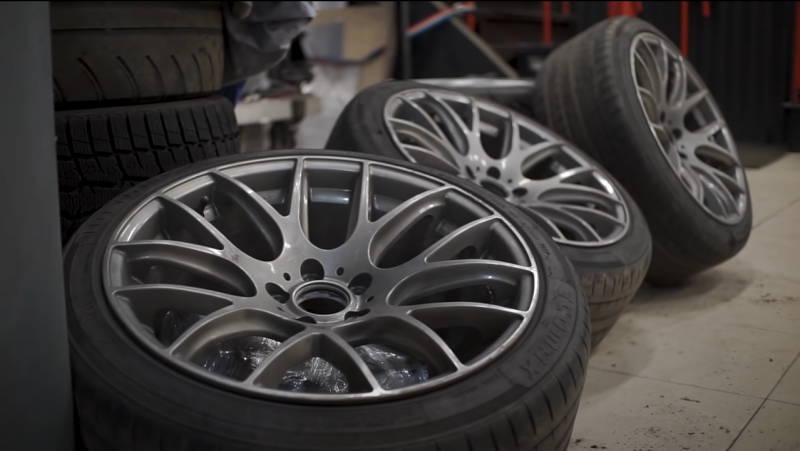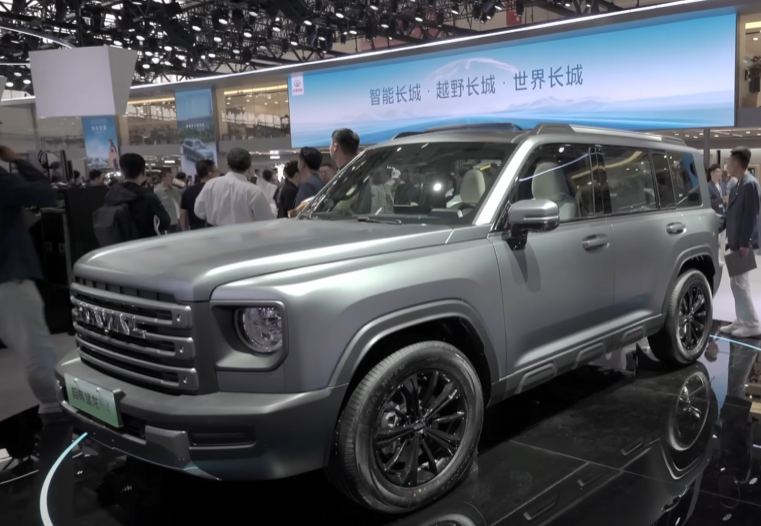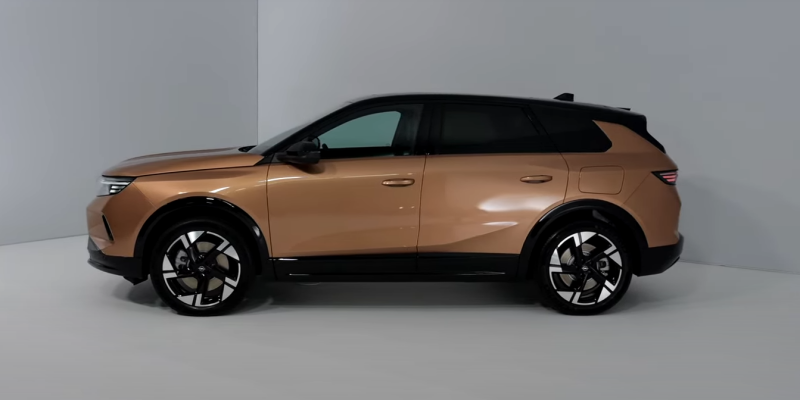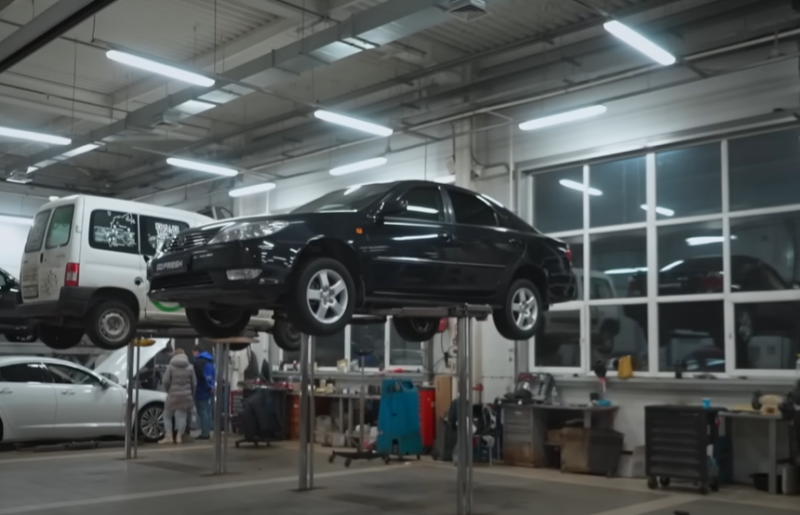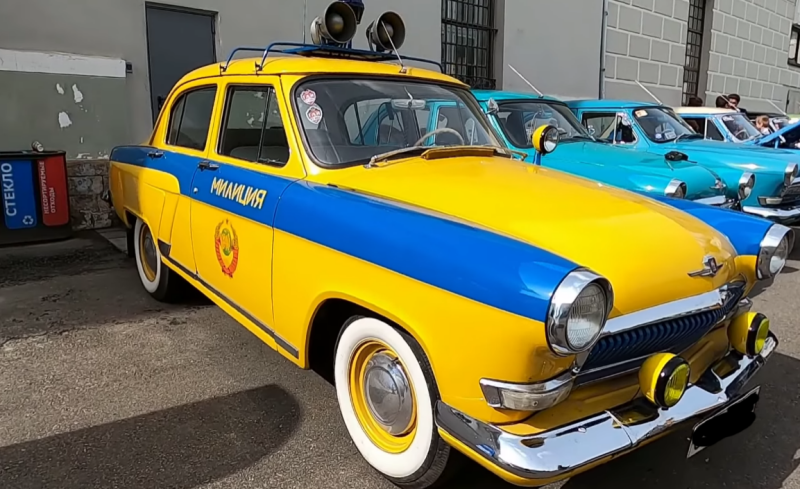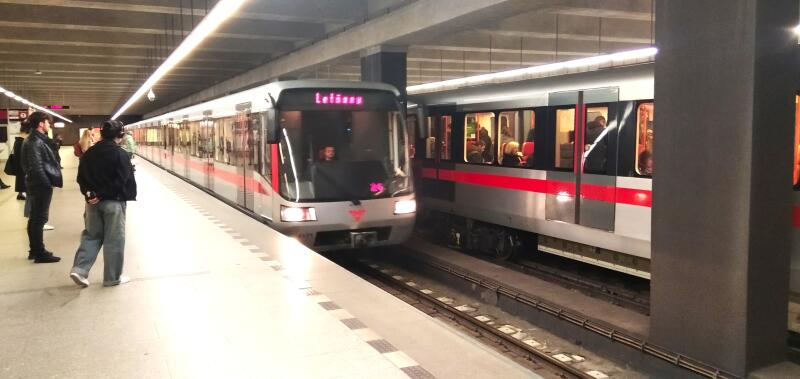In the same year, a new “500th” model, designed for operation with a side trailer, was presented at the Prague exhibition. Although such a powerful motorcycle was intended primarily for military needs, it became more widespread in civilian use.
 CZ 500 - a successful motorcycle of the late 30s. Photo: youtube.com
CZ 500 - a successful motorcycle of the late 30s. Photo: youtube.comThe model for the design of its drive unit was a similar machine from the famous German company DKW. It should be noted, however, that the 500th model from Strakonice was superior to its prototype in many respects. First of all, the quiet and flexible operation of the engine, equipped with a four-speed (instead of three-speed, like the DKW 500) gearbox.
For civil servants and officers of the Vatican
Its development began in 1937, and the first production copies went to customers in the middle of next year. They turned out to be from government administration or ordinary private users. The interest of military structures was limited to a modest figure of two dozen units of powerful equipment.
An even greater sensation was created in 1939 at the Prague exhibition by a special modification of the CZ 500 Vatikan motorcycle. He literally became a sensation at the spring model fair. Next to it they placed a sign “CZ 500ccm, intended for the Vatican.”
A beauty with a creamy white lacquer finish complemented by gold lines and a thick layer of subsequently polished brass applied to the original chrome surface. This option differed favorably from the classic device in black. In his case, according to unverified data, the original parts were replaced with gold ones. However, modern experts are more inclined to believe that they were simply heavily brass-plated.
The seat was covered in luxurious white leather, and Bata made special tires with white sidewalls. True, the further fate of the attractive prototype from Strakonic is not known for certain. The country was going through very difficult times and many were not at all interested in recording local chronicles.
Therefore, there are three versions of possible further developments. According to one, the CZ 500 in luxurious trim was ordered by an officer of the Vatican Guard. Therefore, after the fair, the motorcycle went just to the smallest state in the world, consisting exclusively of cardinals and the like.
 Maximum glamor in the “Vatican” version of the CZ 500. Photo: youtube.com
Maximum glamor in the “Vatican” version of the CZ 500. Photo: youtube.comThe work was carried out on the basis of an order signed by the Evangelist Livy, an officer of the papal guard. The car definitely visited the capital’s exhibition in March 1939. This is evidenced by old photographs from the fair, which show the motorcycle. Then, a month later, he was sent to the Vatican, of which the company received written confirmation. Here's how the price of the variations varied:
✅ basic version – 9000 CZK
✅ for the Vatican – 15 CZK
✅ final cost of “Vatican” – 2000 lire
This turned out to be much less than the previously stated amount and was done purely for advertising purposes. After all, after receiving the equipment, the owner drove it around Europe, taking a number of photos in Italy and France. Thus, a motorcycle of an unusual creamy white color with gold accessories attracted attention and, therefore, became good advertising for a company that had existed on the equipment market for only seven years.
According to another opinion, two (or even several) motorcycles were made at once. To confirm this version, another photo from those times is given. It shows the “Vatican version” in a slightly different configuration. It comes with a seat over the rear wheel and does not have white Bata tyres. This fact may indicate the presence of several prototypes at once.
The truth remains a mystery even today, as some of the company's records were lost in the turbulent years that followed. Therefore, it is still unknown how many copies of this motorcycle were actually produced. Those exhibits that can now be seen at vintage collections and in a number of museum collections are original production motorcycles that received the “colors of the Vatican” after restoration. Even if they are just lines, they still attract attention.
 500 cc engine and “golden” exhaust. Photo: youtube.com
500 cc engine and “golden” exhaust. Photo: youtube.comFor example, collector Jiri Stiburek has been running two museums in the Central Bohemian Region for several years. The first of them is located near the Konopiste castle, the second is in nearby Netvoritsy. Among the exhibits in Konopiste is a copy of the CZ 500 Vatican motorcycle, modified by the manufacturer.
But the question of payment for the delivered unit was very similar to the Russian proverb “the priest has no change.” For several years there was unsuccessful correspondence between the CZ company and the Vatican. In 1942, a manufacturer's representative was even sent to Italy to collect the debt. This was only partially successful - half of the total amount was returned.
One could only take comfort in the fact of widespread advertising, one way or another, but both sides strove for peace and tried to hush up the conflict. The final result was papal gratitude from April 2008 for the delivery of the motorcycle. However, the bill for 2000 lire was never fully paid.
Production and short history
Serial production of this model began at a time when the threat of large-scale hostilities loomed over the mainland. This was the reason for the rapid curtailment of the release of the CZ 500, which received the Tourist prefix. Therefore, today retro equipment is considered very rare and highly valued by collectors. Here are its main characteristics:
✅ frame – from model CZ 250
✅ reinforced struts behind the engine
✅ weight - 170 kg
✅ speed - 115 km / h
✅ fuel consumption – 5,1 l/100 km.
The power unit turned out to be noticeably more complex compared to the single-cylinder version of its predecessor. It received flat pistons and diagonal channels. The crank mechanism was mounted on roller bearings. The mufflers were connected behind the engine. The gearbox has also been modified, now having four positions and bolted to the engine in a semi-block system.
 The chrome tank of the CZ 500 looks simply gorgeous. Photo: youtube.com
The chrome tank of the CZ 500 looks simply gorgeous. Photo: youtube.comOn the engine crankcase was a cleverly designed shock absorber. The clutch was kept in oil and was four-disc. As a result, there were three color options: green (for the army), cream and gold (for the Vatican officer) and black (basic version). In the latest version, the following parts received chrome plating:
✅ tank cover
✅ exhaust system elbows
✅ shock absorbers
✅ rocker arms
✅ steering wheel
✅ reflector frame
The design of the two-stroke engine was based on the classic concept of the brand's motorcycles. Like previous models, it received a geared primary drive, a multi-plate wet clutch and Bosch dynamo-battery ignition. Here are its main indicators:
✅ air cooling
✅ working volume - 494 cubic meters. cm
✅ power – 15 l. s (11 kW) at 3800 rpm
Its engine compartment was not monoblock but semi-block, similar to the Jawa 250 Duplex. This meant that the engine and four-speed foot-operated transmission were separate units.
 The CZ 500 is an indispensable guest at vintage motorcycle rallies. Photo: youtube.com
The CZ 500 is an indispensable guest at vintage motorcycle rallies. Photo: youtube.comIn 1939 it sold for approximately 9 crowns, and if the buyer ordered a stroller, the price rose to almost 400 crowns. For that amount of money back then you could buy two CZ 12 Sport cars. The exclusivity of the CZ 000 is enhanced by the number of cars produced - by 250, less than 500 of them were built. Therefore, today the model is a welcome decoration at every retro technology gathering.
